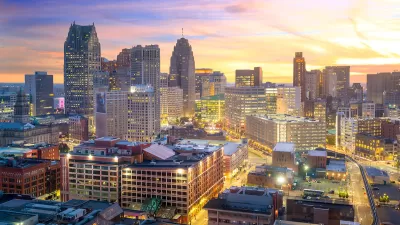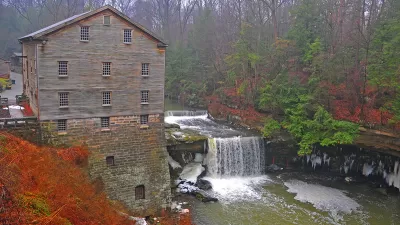The city of Youngstown, Ohio has lost 60 percent of its population since the 1960s. The Youngstown 2010 plan attempted to redevelop a new, smaller city, but how well has it accomplished its goals so far?

Recently faculty members from the University of Michigan’s Ford School Center for Local, State, and Urban Policy hosted a panel called “Lessons from Youngstown: Planning for a Smaller, Greener City,” in the process analyzing the impacts of the Youngstown 2010 Plan.
The Youngstown 2010 Plan, according to a recent article by Maya Kalman, “aimed to involve the community in enhancing the rapidly shrinking city.” Moreover, “[Youngstown 2010] differs from most urban plans, which generally focus on community and population growth.”
“Located among the foothills of the Appalachian Mountains, Youngstown was a center for steel production until the industry began to decline in the 1970s. Urban planners have recently approached the city about looking for ways to redevelop a mid-sized city from a once larger metropolis.”
The faculty panel reported both strengths and weaknesses to the plan’s approach. Included in the plan's strengths: acceptance of the city's decline. The article also describes the Youngstown case study as a model for other shrinking cities, such as Detroit.
FULL STORY: Urban policy experts analyze Youngstown plan

Alabama: Trump Terminates Settlements for Black Communities Harmed By Raw Sewage
Trump deemed the landmark civil rights agreement “illegal DEI and environmental justice policy.”

Planetizen Federal Action Tracker
A weekly monitor of how Trump’s orders and actions are impacting planners and planning in America.

Why Should We Subsidize Public Transportation?
Many public transit agencies face financial stress due to rising costs, declining fare revenue, and declining subsidies. Transit advocates must provide a strong business case for increasing public transit funding.

Understanding Road Diets
An explainer from Momentum highlights the advantages of reducing vehicle lanes in favor of more bike, transit, and pedestrian infrastructure.

New California Law Regulates Warehouse Pollution
A new law tightens building and emissions regulations for large distribution warehouses to mitigate air pollution and traffic in surrounding communities.

Phoenix Announces Opening Date for Light Rail Extension
The South Central extension will connect South Phoenix to downtown and other major hubs starting on June 7.
Urban Design for Planners 1: Software Tools
This six-course series explores essential urban design concepts using open source software and equips planners with the tools they need to participate fully in the urban design process.
Planning for Universal Design
Learn the tools for implementing Universal Design in planning regulations.
Caltrans
Smith Gee Studio
Institute for Housing and Urban Development Studies (IHS)
City of Grandview
Harvard GSD Executive Education
Toledo-Lucas County Plan Commissions
Salt Lake City
NYU Wagner Graduate School of Public Service





























